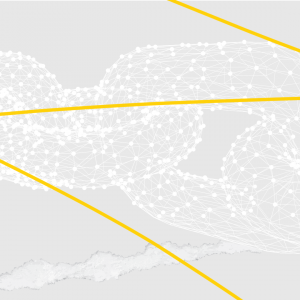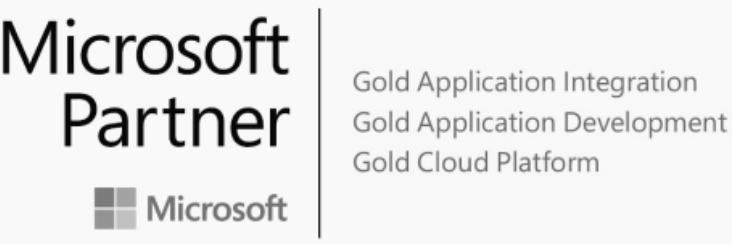Blockchain is the new kid on the block (pun intended). There’s a lot of buzz around it, about how disruptive it is, that it will change a series of industries and will start a wave of innovation. You might have considered using it in your next product or project, but not sure what your approach should be? Let’s see what you can expect down the road!
Disruption always comes at a price, because you are bringing something radically new to the table. Adopting something new takes time. It implies getting out of the comfort zone – for you, for your team, for your users, for the industry. Therefore, disruption can happen at a tipping point: when the need to innovate and the benefits of disruption will outweigh the inconveniences of the process. This is also how blockchain itself was born: to solve a problem.
So far so good. It sounds exciting. Except, it comes at a price. Blockchain solves a series of problems in an innovative way, thus using it implies a paradigm shift. This paradigm shift, although very promising, comes with its challenges. Some of these are not obvious from the start, because disruption questions the very same things that we’ve got accustomed to and take for granted. Let’s dive in!
You operate in a decentralized environment.
Blockchain is successful in delivering its promise to create trust in a trustless environment by making sure that no central party is controlling the information on the blockchain. Not even you! This transfer of control and ownership comes with a series of considerations:
- How do I achieve compliance with various regulations (e.g. GDPR)?
- What happens if I do an honest mistake when adding data to the blockchain?
- What if I have new requirements and I must adjust existing data?
Obviously, there are already a few techniques to cope with these challenges, just keep in mind that these usually imply a change in the way you do things as opposed to centralized systems.
Your users need to communicate with the blockchain.
In a purely decentralized environment, users should not need to communicate with any central authority, but with the blockchain itself. This is not a trivial task and currently needs quite some effort from your users’ part. To consume decentralized applications, you need specialized software. Your users need to be aware of that and they will need to go through a learning curve themselves.
On the other end of the spectrum, users are already accustomed to certain ways of interacting with software. Depending on your use-case, the real value that you can bring is finding a way to combine centralized technologies with blockchain in such a way that you can offer your users all the good stuff that they are accustomed to, while also leveraging the blockchain promise. And walking that fine line takes some fiddling with the technology
Developers need to adjust to the new paradigm too.
Because of the nature of the technology, developing blockchain applications resembles developing firmware: once you release it, it’s out there on thousands of devices. Devices over which you have very limited (if any) control. Thus, the price of updates is very high. As with firmware, get it right the first time, or you will pay the price later. This also implies that a series of best practices that developers are usually familiar with might not fit well: continuous integration, incremental builds, Agile itself. You’re more than welcome to use these internally, but your first release should be as complete and stable as possible.
Blockchain is immutable.
This also means that you need to deliver quality software from the start. And the implication is that you need to budget way more design and testing time than in centralized projects. They say that software testing cannot prove that a piece of code has no bugs, it can only prove that known bugs have been fixed. Thus, quality starts with software design. You should budget enough time to consider all the corner cases, limitations, long term consequences and security implications. You should have strong quality metrics.
Having a dedicated testing team is also important. Your developers will start with a great design and their code might be of excellent quality, yet bugs will slip through the process. This is because it is hard to accurately test your own code. People tend to build a mental model for solving a problem, and developers will use the same mental model for testing their code. In other words, they will look for bugs using the same mental model with which they’ve created them in the first place. This is human nature. A dedicated testing team can make sure that software is verified using a different mental model. Budgeting plenty of testing time is also important. The rule of thumb (that might shock you at first) is ‘5 to 10x’: for every week of development consider 5 to 10 weeks of testing. Software testing for blockchain is not just an aspect of quality assurance, but a way of risk mitigation.
Security is paramount.
Your code is accessible in some shape or form to everyone running a blockchain node (and in case of public blockchains to literally anyone). Thus, security plays a crucial role in your development lifecycle. Even more, once out there you cannot really modify it. If there is a security bug, bad actors can exploit it and there is not much you can do about it, since you cannot just patch your code, like you would in a centralized environment.
The technology and tool set are not yet mature.
The ecosystem is still in its early stages and while new implementations and tools appear quite frequently, these are not as stable as the offering on conventional technologies. Often, developers need to face the reality that something that is trivial to achieve using other technologies will turn out to be quite complex with blockchain.
Blockchain is not particularly fast.
The main characteristic of blockchain is immutability and security. By design, blockchain solutions will favor these over performances. Of course, the technology is rapidly evolving, and new solutions are proposed to boost blockchain performance, but today’s reality is that blockchain is not as performant as other centralized technologies.
At this point, you might incline towards giving up on blockchain, but the truth is that there are solutions and practices in place to help you deal with the challenges that you might face. The key takeaway is that blockchain not only disrupts the fields it is used in, but it has similar effects on the way you build your product as well.
So, is it worth it?
As with every technology, the answer is: it depends. Blockchain can indeed bring innovation to a whole series of industries and it has a lot of potential. In some cases, it really is unparalleled and offers advantages that simply cannot be matched by any other technology on the market. But we should use the right tool for the job. This technology is particularly good at making sure that information cannot be tampered with and there is a complete and immutable history of events, a permanent record of sorts. If that is something that you are after and you can build value on it then blockchain will prove to be a great fit for you.





